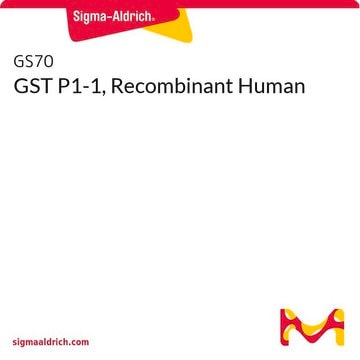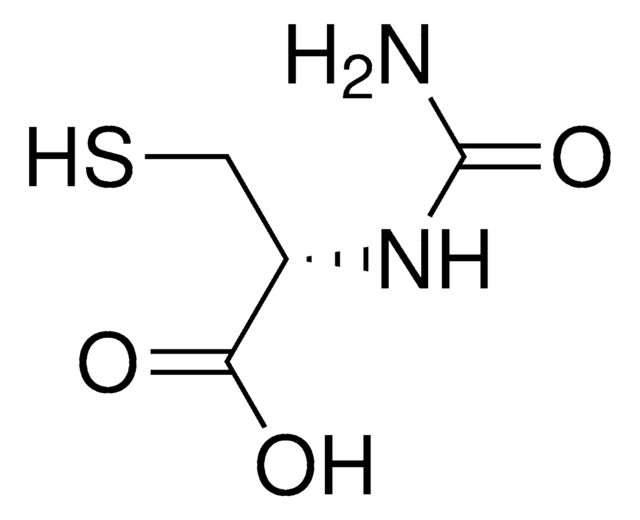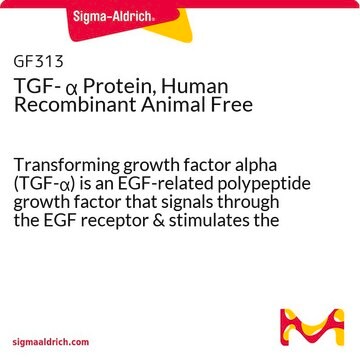SRP5136
SOD2, GST tagged human
recombinant, expressed in E. coli, ≥70% (SDS-PAGE), buffered aqueous glycerol solution
Synonym(s):
IPO-B, MNSOD, Mn-SOD
Sign Into View Organizational & Contract Pricing
All Photos(1)
About This Item
Recommended Products
biological source
human
recombinant
expressed in E. coli
Assay
≥70% (SDS-PAGE)
form
buffered aqueous glycerol solution
mol wt
~51 kDa
NCBI accession no.
application(s)
cell analysis
shipped in
dry ice
storage temp.
−70°C
Gene Information
human ... SOD2(6648)
General description
SOD2 (superoxide dismutase 2) is a member of the iron/manganese superoxide dismutase family. SOD2 binds to the superoxide byproducts of the mitochondrial electron transport chain and converts them to hydrogen peroxide and diatomic oxygen. Failure of SOD2 to remove the superoxide byproducts leads to an increase in mitochondrial reactive oxygen species resulting in biochemical aberrations with features reminiscent of mitochondrial myopathy, Friedreich ataxia, and HMGCL deficiency. Mutations in SOD2 have been associated with idiopathic cardiomyopathy (IDC), premature aging, sporadic motor neuron disease, and cancer.
Physical form
Supplied in 50mM Tris-HCl, pH 7.5, 150mM NaCl, 10mM glutathione, 0.1mM EDTA, 0.25mM DTT, 0.1mM PMSF, 25% glycerol.
Preparation Note
after opening, aliquot into smaller quantities and store at -70 °C. Avoid repeating handling and multiple freeze/thaw cycles
Storage Class Code
10 - Combustible liquids
WGK
WGK 1
Flash Point(F)
Not applicable
Flash Point(C)
Not applicable
Choose from one of the most recent versions:
Certificates of Analysis (COA)
Lot/Batch Number
Don't see the Right Version?
If you require a particular version, you can look up a specific certificate by the Lot or Batch number.
Already Own This Product?
Find documentation for the products that you have recently purchased in the Document Library.
S Melov et al.
Nature genetics, 18(2), 159-163 (1998-02-14)
Reactive oxygen species (ROS) have been implicated in a wide range of degenerative processes including amyotrophic lateral sclerosis, ischemic heart disease, Alzheimer disease, Parkinson disease and aging. ROS are generated by mitochondria as the toxic by-products of oxidative phosphorylation, their
S Hiroi et al.
Biochemical and biophysical research communications, 261(2), 332-339 (1999-07-30)
To reveal genetic risk factors of nonfamilial idiopathic cardiomyopathy (IDC) in Japanese, polymorphisms in the SOD2 and HLA-DRB1 genes were investigated in 86 patients and 380 healthy controls. There was a significant excess of homozygotes for the V allele [Val
Our team of scientists has experience in all areas of research including Life Science, Material Science, Chemical Synthesis, Chromatography, Analytical and many others.
Contact Technical Service








